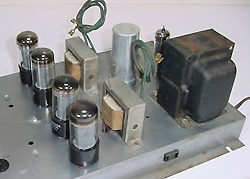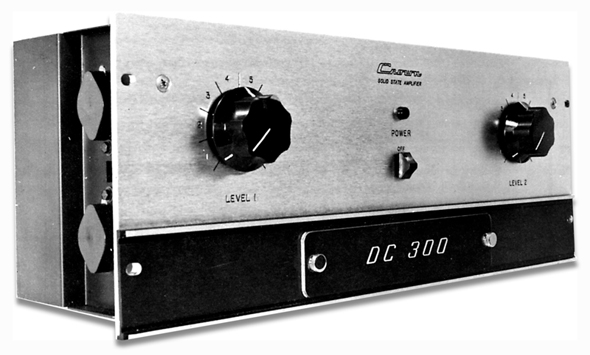
FRYING TONIGHT
In hindsight, the early transistor amplifiers that pushed these old locomotives aside were far worse.
The first generation “high power” solid-state designs eliminated the bulk and distortion of the audio output transformer, ran cooler (relatively speaking), and did not need to have the output tubes replaced.
But they blew up all the time, often frying the loudspeakers connected to them.
At first, they used Geranium transistors because they offered wider bandwidth (the more robust Silicon transistors at the time were military grade and had the prices to prove it), but Geranium semiconductors just did not survive in the field, and output tubes starting looking good again.
Then there was the matter of the very nasty notch distortion at lower power levels, and these early transistor amplifiers were adverse to unusual loads—they often “smoked” when presented with a load that was not well behaved.
The protection circuits, when they were implemented and when they worked, interfered with the sound quality and sometimes the overall operation of the amplifier.
Early monsters included the CM Labs 911, with an awesome 100 watts per channel, the Dynaco Stereo 120 (of which we still have two that we actually built ourselves from kits that are, after eleventy billion repairs and modifications, still working), and the Mattes 200, which had a Class B output circuit.
The Mattes was a very compact and cleanly styled amplifier that had classic (for something that was relatively new) transistor sound, which is essentially very high inter-modulation distortion due to crossover—which is when the output voltage crosses from positive to negative and negative to positive at zero volts output, and should not be confused when this term is used in regards to dividing the frequency bands in a crossover don’t you just love (English) notch distortion.
The exception to all these stinkers were the JBL SE 400 and SE 460 power amps, which when cooled properly, were more reliable and had better sound quality and the quantitative specifications were equal to or better than a lot of what we have today.
In the more sophisticated characteristics, such as overload recovery time, slew rate, and transient inter-modulation distortion, they were just as good or better than a lot of what you can buy today. But today, at 60 watts per channel, the SE 460 would be relegated to driving headsets.
Then there was the McIntosh 2105, which was a decent design that used auto-transformers on its output and was quite well behaved in rigorous applications and put out a thundering 105 watts per channel.
One other notable contender came from what was then a tape deck company—Crown. The DC-300 put them on the map and changed the course of this outfit forever.


